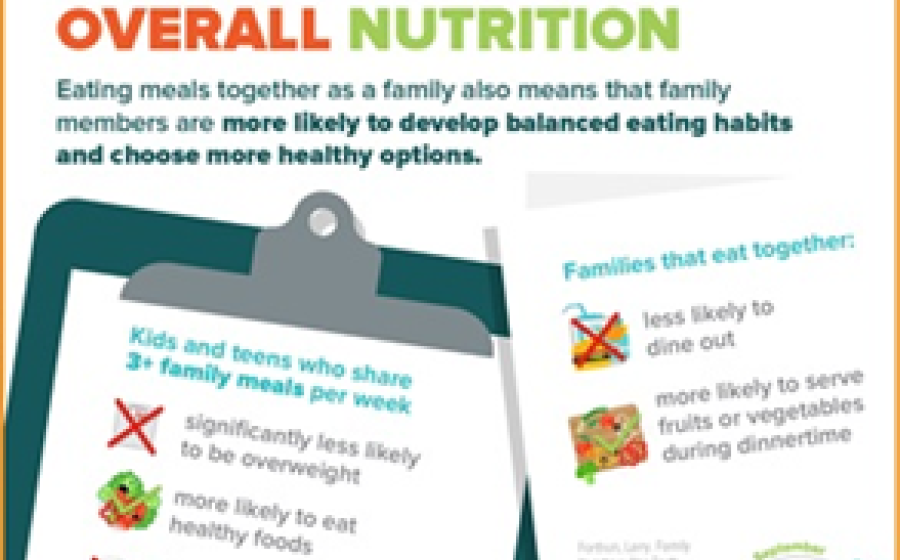5 Tips to Pick the Right Dental Plan
(Mayra Garza, Head of Group Benefits Strategy and Retail Segment at Guardian and Shawn Patrick, Director of Strategic Growth at Kelsey National) - Open Enrollment is here.
- Open Enrollment is here.
For many Americans, this is the time of year they dedicate to thinking about their insurance benefits, regardless of whether they are purchased individually or accessed through their employer.
As individuals think about their and their families’ health needs and what types of coverage will provide the best support, it’s important not to overlook the role of dental insurance. Why? Because good oral health plays an important role in influencing physical health, as well as someone’s mental and financial well-being.
Kick-starting and supporting good oral health is rooted in selecting the right dental insurance plan for you and utilizing its benefits. With this in mind, here’s what individuals should consider as they evaluate their various dental insurance options over the next few months.
The oral health foundation
A recent study by Guardian found that only 35% of Americans rate their oral health as excellent or very good.
The implications of this go beyond just the mouth.
For example, problems located in the mouth can affect the whole body. When left untreated, mouth bacteria can spread to the bloodstream, harming other parts of the body. Gum disease, for example, occurs when bacteria infect the gums and the condition has been linked to serious health issues such as cardiovascular disease, diabetes, respiratory ailments, and even Alzheimer's disease.
Another way dental hygiene can influence the whole body is nutrition. When significant tooth loss occurs, it may decrease a person’s appetite and limit what a person eats. This situation may lead to an imbalanced diet that lacks the foods necessary to promote sound health.
There are also mental and emotional health implications. Missing, damaged, or discolored teeth, for example, can make a person self-conscious and lead them to avoid social interactions. In fact, Guardian found that 78% of people with self-reported “fair” or “poor” oral health indicated it has had an effect on their mental health.
Finally, there is a connection between oral health and financial wellness. Generally speaking, individuals who get regular preventive dental care see significant cost savings down the line—either because they need fewer dental procedures overall or have lower claims costs. As financial well-being plays an outsized role in influencing mental, physical, and overall well-being, finding the right dental insurance policy for you and using the associated benefits is essential.
Finding the right coverage for you
There is no single dental plan that is perfect for everyone. However, even when purchasing dental insurance individually (as opposed to receiving it through a work benefit), there are a wide range of options to help meet someone’s needs.
The first step in choosing the right plan for you and your needs is finding a plan that covers preventive, basic, and major dental care. While you may not have immediate need for all these services, comprehensive coverage provides protection against unexpected events like the fracture of a tooth or the need for a root canal. At minimum, using the preventive benefits—which often includes coverage for bi-annual dental exams and teeth cleaning to remove plaque and tartar—provides dentists with the opportunity to spot emerging problems before they become more complicated or expensive to fix.
The second step is to confirm the plan in question covers services you expect to use in the near future. Aside from regular cleanings and x-rays, you may want teeth whitening or orthodontia. Since not every plan insures these services, you’ll need to confirm coverage in a plan’s summary of benefits. When considering services you may need, pay particular attention to waiting periods—which many dental plans have and which require that you be enrolled in the plan for a minimum number of months before a more expensive procedure may be covered. If you have an immediate dental need, it’s important to make certain that service is available once your plan is purchased and active.
A third step is to look into the plan’s dental network. There are three common types of networks—Preferred Provider Organizations (which give you the option of using dentists both in and out-of-network), Health Maintenance Organizations (which restrict you to in-network dentists), and indemnity (often lacks a network and allows a member to see any dentist). In addition to confirming that your current or preferred dentist is in your plan’s network, make sure that network includes nearby specialists. Whether you might need a pediatric dentist for your child or an oral surgeon, having a comprehensive network is one of the best ways to get value from your dental plan. To help confirm whether a dentist takes a specific insurance plan, many insurance carriers have a provider search function on their website or app.
Another consideration is a dental plan’s maximum benefit. A maximum benefit is an insurance company’s annual limit on what they contribute toward dental expenses. If a dental plan has a $1,500 maximum limit, for example, that means the insurance company will spend up to $1,500 every plan year on covered dental expenses (after the deductible has been satisfied). Some plans reward enrollees for loyalty by increasing the plan’s annual limit in the second and third year of coverage.
Finally, make it easy on yourself. After all, people are more likely to utilize dental benefits that are accessible and understandable—and, as mentioned, increased utilization is closely linked to better oral health outcomes and lower costs. One area many insurers are investing in to support utilization is technology. When evaluating an insurance plan, take a look at some of these tech enabled features, including whether you can add your ID card to your smartphone wallet and whether they have any online resources to help you understand or maximize offered benefits. Another component to look at is whether any self-service tools are available, including online dentist search databases, the ability to set-up recurring payments, and whether you can pay bills online.
Supporting your well-being
The link between regular dental care, better oral health, and overall wellness can’t be underestimated—and it starts with having the right plan for you in place. As you consider your insurance benefits for the year ahead, don’t overlook the importance of dental insurance.
For more information, visit dentalinsurance.com.



 - Approximately 40% of children in the United States live at or below the poverty line, facing daily challenges and hardships. Their parents, grappling with the relentless impact of record-high inflation, struggle to provide even the most basic necessities. They simply don’t have the financial means to provide toys, books, or games for their children.
- Approximately 40% of children in the United States live at or below the poverty line, facing daily challenges and hardships. Their parents, grappling with the relentless impact of record-high inflation, struggle to provide even the most basic necessities. They simply don’t have the financial means to provide toys, books, or games for their children. 
 - As advances in artificial intelligence continue to transform the world, the integration of AI and robotics will have a significant impact on many areas, and will change both fields.
- As advances in artificial intelligence continue to transform the world, the integration of AI and robotics will have a significant impact on many areas, and will change both fields.  - According to a recent Houzz report, kitchens remain the most renovated interior room (29%), followed closely by guest and primary bathrooms (27% and 25%, respectively). In 2023, the median spend for kitchen renovations climbed by 20% to $24,000, while primary bath projects saw an 11% increase, reaching $15,000. With home improvement investments rising, here are five transformative kitchen and bath upgrades to elevate your space without breaking the bank:
- According to a recent Houzz report, kitchens remain the most renovated interior room (29%), followed closely by guest and primary bathrooms (27% and 25%, respectively). In 2023, the median spend for kitchen renovations climbed by 20% to $24,000, while primary bath projects saw an 11% increase, reaching $15,000. With home improvement investments rising, here are five transformative kitchen and bath upgrades to elevate your space without breaking the bank:





 - Have you ever thought about how you can buy most fresh fruits year-round? Think hemispheres: The U.S. is located in the Northern Hemisphere, so when certain fruits are out of season here, they are being grown, harvested, and shipped to your local grocery store by countries in the Southern Hemisphere.
- Have you ever thought about how you can buy most fresh fruits year-round? Think hemispheres: The U.S. is located in the Northern Hemisphere, so when certain fruits are out of season here, they are being grown, harvested, and shipped to your local grocery store by countries in the Southern Hemisphere. 
 - A majority of American women view themselves as the “Chief Financial Officer” of their family, but less than half report taking an active role in investment decisions, based on a survey from financial services firm Edward Jones in partnership with Morning Consult and NEXT360 Partners.
- A majority of American women view themselves as the “Chief Financial Officer” of their family, but less than half report taking an active role in investment decisions, based on a survey from financial services firm Edward Jones in partnership with Morning Consult and NEXT360 Partners.
 - With the start of Medicare’s open enrollment period, it’s important that older Americans explore their healthcare options to make the best choice for their unique needs.
- With the start of Medicare’s open enrollment period, it’s important that older Americans explore their healthcare options to make the best choice for their unique needs.
 - As artificial intelligence technology grows stronger, what we known about the complexity of the human brain provides perspective to its development, according to experts at experts at the Special Competitive Studies Project (SCSP), a nonprofit and nonpartisan initiative with a goal of making recommendations to strengthen America's long-term competitiveness in AI.
- As artificial intelligence technology grows stronger, what we known about the complexity of the human brain provides perspective to its development, according to experts at experts at the Special Competitive Studies Project (SCSP), a nonprofit and nonpartisan initiative with a goal of making recommendations to strengthen America's long-term competitiveness in AI. -
-  Again and Again Back to You by Andrea Ezerins
Again and Again Back to You by Andrea Ezerins Legends of Astraea by Sophia Alessandrini
Legends of Astraea by Sophia Alessandrini Our Life, Our Work, Our Humanness by Vincent Dodd
Our Life, Our Work, Our Humanness by Vincent Dodd Touch Time by R.E. Mason
Touch Time by R.E. Mason
 - The challenges of military life don't always end when the mission does. For many in our military community – both active duty and veterans alike – there's an ongoing, often silent struggle with mental health. This fall, as we observe Mental Health Awareness Month in October and honor our service members in November, Blue Star Families is bringing this critical issue to the forefront.
- The challenges of military life don't always end when the mission does. For many in our military community – both active duty and veterans alike – there's an ongoing, often silent struggle with mental health. This fall, as we observe Mental Health Awareness Month in October and honor our service members in November, Blue Star Families is bringing this critical issue to the forefront.




